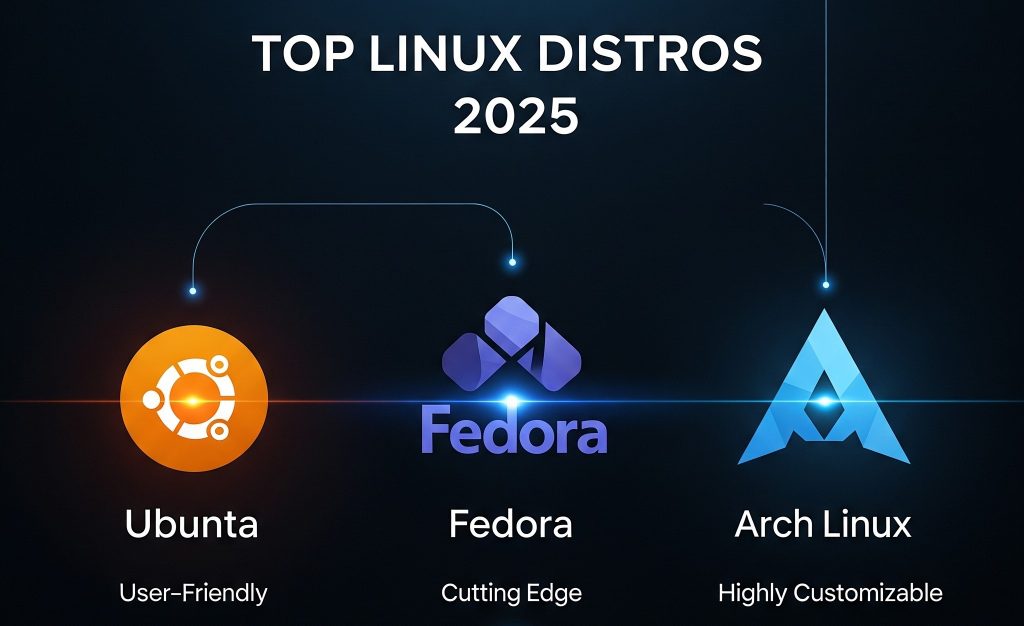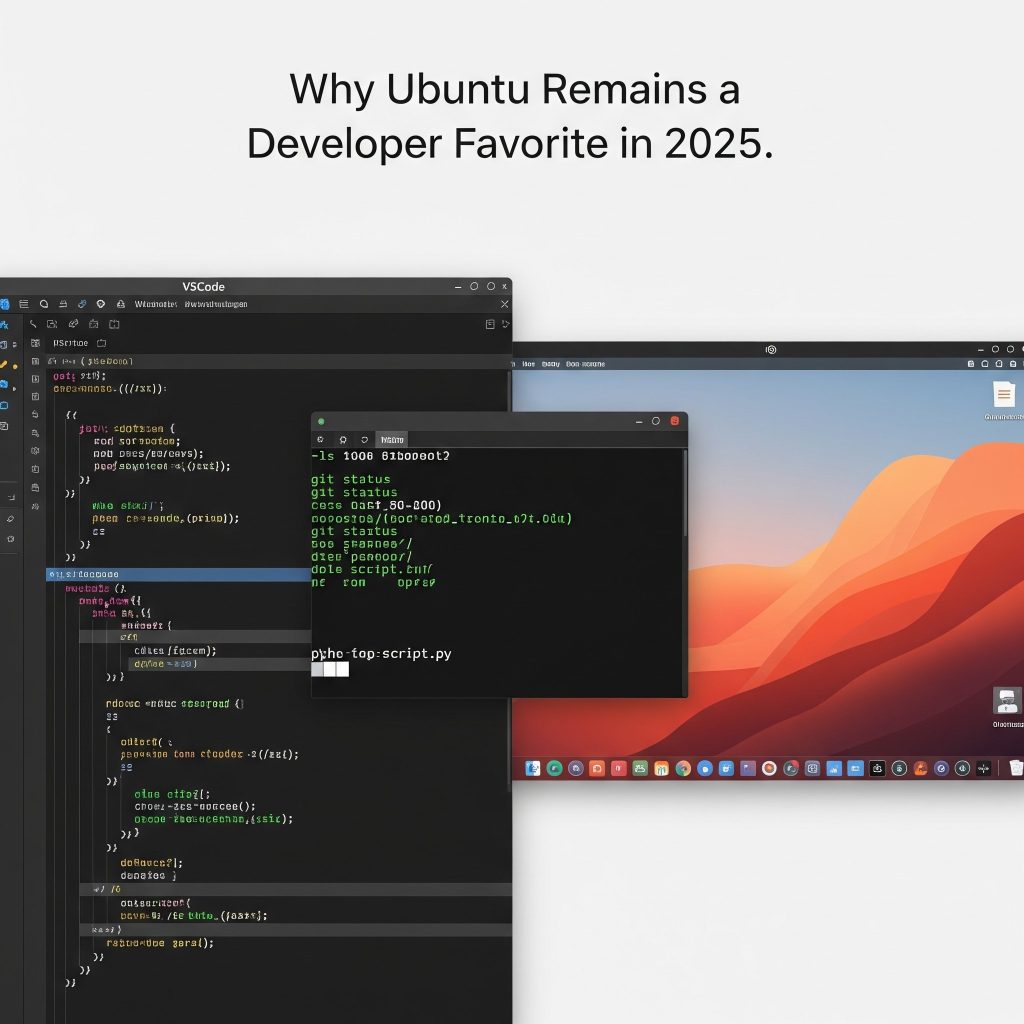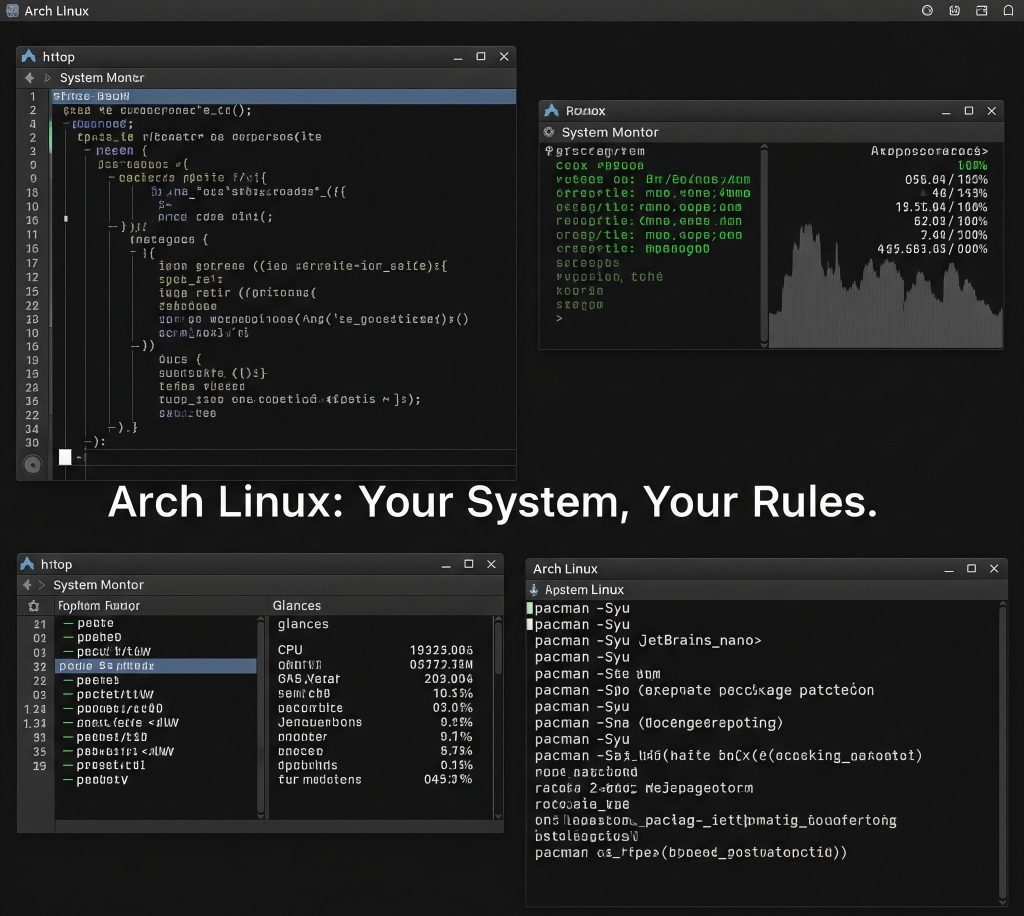Introduction: Why Linux Still Rules in 2025
In 2025, Linux remains the go-to operating system for developers across the globe. Whether you’re into backend APIs, system-level programming, or front-end frameworks, choosing the right Linux distro can drastically improve your workflow. But with so many distributions available, how do you choose the best one?
Let’s compare the three most developer-preferred distros: Ubuntu, Fedora, and Arch Linux.

🧭 Key Considerations for Developers in 2025
Before diving into the individual distros, here are a few critical factors developers should consider in 2025:
🔧 Toolchain Compatibility
Are essential tools (like Docker, Node.js, or Python 3.12) pre-installed or easy to set up?
💡 Package Management
Does the distro support modern package management like Snap, Flatpak, or AUR?
🚀 Performance and Stability
Is the distro stable enough for daily coding? Does it run well on laptops and virtual machines?
🔴 Ubuntu 24.04 LTS: The Safe Bet for Most Developers
Overview
Ubuntu remains the most user-friendly Linux distro with wide community support and excellent documentation. The 2025 version, Ubuntu 24.04 LTS, continues this tradition with better security, faster boot times, and Snap-based packaging.
Why Developers Love Ubuntu
- Preinstalled Tools: Comes with Git, Python, and GCC.
- Great for Docker and WSL: Ideal for containerized apps and Windows dual-boot setups.
- Large Community: Endless forums, Reddit threads, and Stack Overflow support.
Potential Drawbacks
- Snap packages can be slow.
- Not as bleeding-edge as Arch or Fedora.

🔵 Fedora 40: For the Cutting-Edge Coders
Overview
Fedora has always been at the forefront of innovation. In 2025, Fedora 40 delivers bleeding-edge updates while maintaining a commitment to free and open-source software.
What Makes Fedora Stand Out
- Flatpak integration for modern apps.
- Wayland by default, enhancing graphics performance.
- Regular updates aligned with upstream changes (especially GNOME).
Great for:
- Web developers using GNOME-based IDEs.
- Rust or Go developers needing fast updates.
- Contributing to open-source software.
Drawbacks
- Shorter support cycle than Ubuntu.
- Requires more frequent updates and reboots.
🔷 Arch Linux: The Power-User’s Playground
Overview
If customization, control, and learning are your priorities, Arch Linux is your best friend. In 2025, Arch continues to be the go-to for advanced developers.
Why Devs Choose Arch
- Rolling releases keep everything up-to-date.
- Arch Wiki is a goldmine for troubleshooting and tutorials.
- AUR (Arch User Repository) provides access to thousands of community packages.
Perfect For:
- DevOps engineers needing fine-grain control.
- Those learning Linux internals.
- Developers wanting bleeding-edge kernels and packages.
Potential Downsides
- Steeper learning curve.
- Manual installation and configuration required.

💡 Which Distro Should You Choose in 2025?
| Distro | Best For | Pros | Cons |
|---|---|---|---|
| Ubuntu | Beginners & General Devs | LTS support, large community | Slower Snap, less cutting-edge |
| Fedora | Cutting-edge Developers | Flatpak, GNOME latest, better graphics | Frequent updates |
| Arch | Power Users & Tinkerers | Full control, AUR, rolling updates | Manual setup |
🛠️ Dev Tool Support in 2025 (Quick Overview)
| Tool | Ubuntu | Fedora | Arch |
|---|---|---|---|
| Docker | ✅ | ✅ | ✅ |
| Node.js | ✅ | ✅ | ✅ |
| Rust | ✅ | ✅ | ✅ |
| Kubernetes | ✅ | ✅ | ✅ |
| Flutter | ✅ | ✅ | ✅ |
🎯 Final Verdict: No One-Size-Fits-All
In conclusion, the best Linux distro for developers in 2025 depends on your skill level, preferred tools, and comfort with customization.
- Choose Ubuntu for stability and ease.
- Go for Fedora if you like the latest tech.
- Opt for Arch if you want full control and flexibility.
Each of these distros has its own strengths—and in today’s dev landscape, there’s no wrong answer if it fits your workflow.

